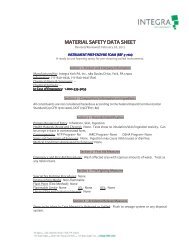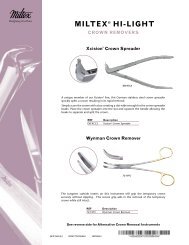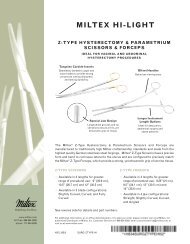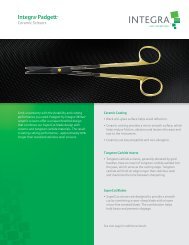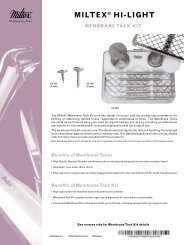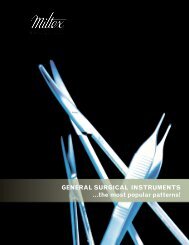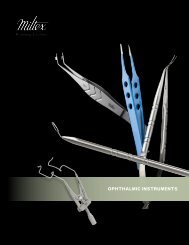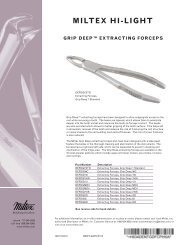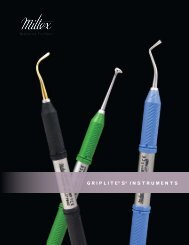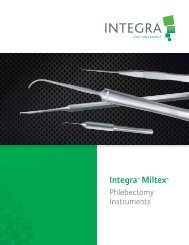Catalog - Endodontics
Catalog - Endodontics
Catalog - Endodontics
Create successful ePaper yourself
Turn your PDF publications into a flip-book with our unique Google optimized e-Paper software.
Instrument Sharpening instructions<br />
ARKANSAS STONES<br />
I n s t r u m e n t s h a r p e n i n g<br />
instructions<br />
INDIA STONES<br />
STN-ARK-CON<br />
STN-ARK-FLT-4<br />
STN-IND-CON-309<br />
STN-IND-FLT-1<br />
STN-IND-WDG-6<br />
Why sharpen instruments<br />
Instruments should be kept as true as possible to their<br />
original design. Sharp instruments can reduce hand and<br />
wrist fatigue, improve calculus removal, save time,<br />
improve tactile sensitivity, and minimize patient discomfort.<br />
When to sharpen instruments<br />
Instruments should be sharpened before each use;<br />
however, please consider the following when deciding<br />
to sharpen instruments:<br />
• Dull instruments require excessive pressure to<br />
remove calculus<br />
• Dull instruments require multiple strokes to<br />
remove calculus<br />
• Dull instruments do not “grab” or “bite”<br />
• The number of uses between sharpening<br />
• Evaluation of the cutting edge against a<br />
Delron stick<br />
• Patient comfort and evaluation<br />
Instruments can be sharpened by using several different<br />
types of stones and different shapes of stones<br />
• Arkansas stones – Natural stone<br />
(used for routine sharpening and finishing)<br />
a. Flat stone – used in routine sharpening and<br />
finishing of the edge and toe of an instrument<br />
b. Conical stone – used in routine sharpening and<br />
finishing of the toe and face of an instrument<br />
CERAMIC STONES<br />
SP2<br />
SPC<br />
SPF<br />
• India stones – Synthetic stone<br />
(used for re-contouring a dull instrument)<br />
a. Flat stone – used in re-contouring dull edges and<br />
toes of an instrument<br />
b. Cylindrical – used in re-contouring dull toes and<br />
faces of an instrument<br />
c. Wedge – used in re-contouring dull edges, toes and<br />
faces of an instrument<br />
• Ceramic stones – Synthetic stone (used for routine<br />
sharpening and finishing of an instrument)<br />
a. Flat stone – used in routine sharpening and<br />
finishing of the edge and toe of an instrument<br />
b. Cylindrical stone – used in routine sharpening and<br />
finishing of the toe and face of an instrument<br />
SPM<br />
90<br />
www.miltex.com



